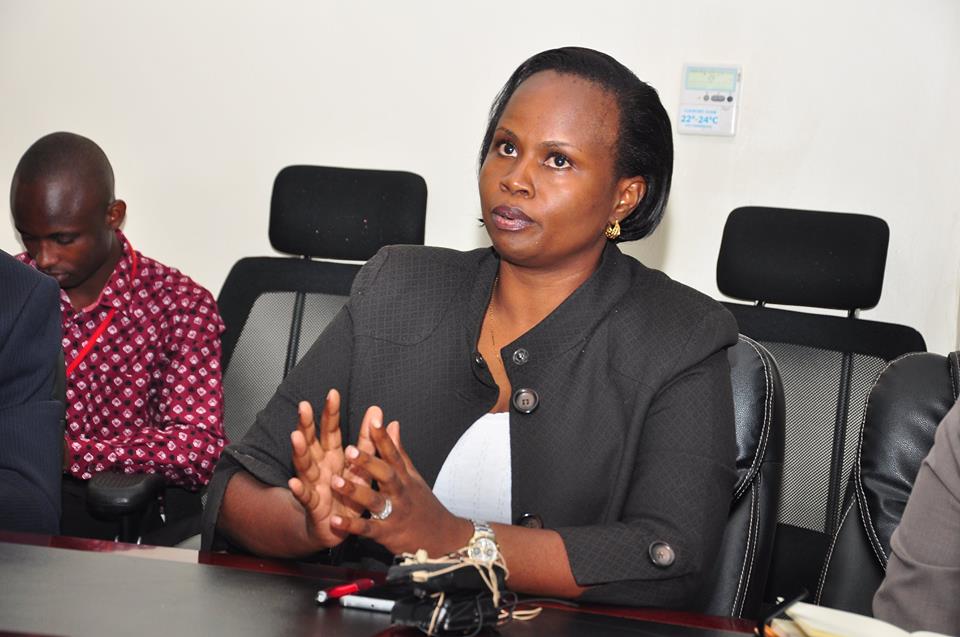American International Group (AIG) has tapped on seasoned insurance executive, Lydia Kayonde to lead their re-entry into the Ugandan market, CEO East Africa Magazine has learnt.
The Insurance Regulatory Authority’s Chief Executive Officer, Ibrahim Kaddunabbi Lubega, was quoted by The Independent magazine in December 2018, confirming that AIG Uganda Ltd, had been issued a green-field insurance investment.
Before its exit late 2016, AIG had operated in Uganda since 1962. It, in the wake of the 2008 financial crisis and subsequent federal bailout of the mother company, was rebranded to Chartis Insurance in 2009, but reverted to AIG in 2012.
Before its exit, AIG had gradually lost its market leadership position to Jubilee Insurance and UAP Insurance (now UAP), with UGX31.9 billion premiums in 2016 and a market share of 7.10% compared to its heydays in 2013 when it underwrote UGX50.1 billion in non-life premiums and UGX29.9 billion in life premiums.

In 2014, when IRA stopped issuing licenses to composed insurance companies and ordered for the split of life and non-life business, AIG dropped its life insurance arm. Their industry market share and business continued declining till their eventual exit in 2016.
Their headquarter building was sold to Britam Insurance for an undisclosed amount.
However, even in their last days- AIG remained one of the most respected and trusted brands in the business, especially in claims settlement.
Who is Lydia Kayonde?
Lydia Kayonde, is no stranger in both the AIG and insurance corridors. For nearly 10 years, she was the Manager-Liabilities & Financial Lines at both AIG and Chartis before she was tapped by Stanbic Bank to head their newly established bancassurance unit.
Stanbic was the first bank to receive a bancassurance license in October 2017.
Other than leading Stanbic to being the first bancassurance agent, Kayonde has been instrumental in shaping Stanbic as the industry leader in bancassurance.
Stanbic, according to the IRA 2018 annual report, collected UGX9.9 billion in premiums, out of the industry’s UGX19.7 billion non-life premiums- earning a UGX50.22% market share, well ahead of Barclays Bank and dfcu Bank, their closest rivals, who collected UGX5.1 billion and UGX1.5 billion translating into 26.1% and 7.6% market share respectively.
Stanbic also led in non-life premiums collections – having collected UGX1.8 billion in premiums- of the total UGX6.3 billion industry premiums, translating to a 27.9 market share.
Positive 2019 outlook
AIG is yet to officially comment about their return to the Ugandan market, but is believed to be driven by the growth in infrastructure spending by especially government and oil and gas companies- all of which herald positive industry projections.
Left-Right: Insurance Consortium for Oil and Gas (ICOG), Chairman and Goldstar Insurance Managing Director, Azim Tharani, Peter Muliisa Chief Legal and Corporate Affairs Officer of the Uganda National Oil Company (UNOC) and Hon. Dr. Elly Karuhanga the Uganda Chamber of Mines and Petroleum chairman at the announcement of the $200 million oil & gas insurance fund. Oil & gas related infrastructure investments are expected to boost the local insurance sector
Government infrastructure investments, reached 8.9 percent of GDP in FY17/18 and is envisaged to increase further this year and next, according to the IMF Uganda Country Report, May 2019.
Uganda is transitioning from the oil exploration stage to development and production stages; industry estimates say this stage will take up to 5 years and will cost up to USD20 billion. Uganda has also opened a second licensing round for five oil and gas exploration blocks in the Albertine Graben.
14 insurance companies in Uganda, under their Insurance Consortium for Oil and Gas (ICOG) have raised over $200m (sh745b) aggregated insurance capacity in readiness for Uganda’s oil and gas industry.
The insurance industry in Uganda underwrote UGX856 billion (USD227.8 million) in 2018- that is UGX73.60 billion (USD19.6 million) more than the Shs782.4 billion (208.2 million) underwritten in 2017. This is a 17.5% growth rate, compared to a 14.75% growth rate registered in 2017.
IRA Q1, 2019 reports show that industry premiums grew 9.1%, from UGX260.5 billion in Q1, 2018 to 284.1 billion, on the back of a 30.7% growth in life premiums- from UGX48.5 billion to UGX63.4 billion. Non-life business grew by 4.1% from UGX190.8 billion to UGX198.5 billion while Health Membership Organisations (HMOs) grew by 4.4% from UGX21.2 billion to UGX22.1 billion.
IRA’s Kadunabbi in a recent 23rd May 2019 industry presentation also expressed optimism that the industry would maintain this positive trend in 2019, on the back of upcoming projects like the Standard Gauge Railway, the USD3.5 billion East African Crude Oil Pipeline (EACOP), Uganda Airlines and the UGX470 billion CCTV cameras project in metropolitan Kampala.
He also said that growth in bancassurance as a channel as well the increased uptake of micro-insurance facilitated by mobile money platforms spelt growth news for the sector. Kadunabbi is also betting on recent industry engagements with Uganda Revenue Authority to enforce Section 9(3) of the Insurance Act so as to stop the millions of dollars being haemorrhaged out of the country in marine and cargo insurance.
Section 9(3) of the Insurance Act, dictates that, “all local risks and persons including imports shall be insured by insurance companies licensed to carryout insurance business in Uganda.”
According to Bank of Uganda Balance of Payments report, USD67.5 million (UGX254.2 billion) left the country in 2018 for insurance- this is equivalent to 30% of the entire Ugandan insurance industry.
Kenya, under their revised insurance laws in 2017 localised all marine cargo insurance business, with some penalties for errant parties and in just one year, alone, grew marine premiums by 37%- from KES2.6 billion (UGX96.6 billion) to KES3.6 billion (UGX132.2 billion).
By comparison, Uganda underwrote UGX33.5 billion under the marine/aviation category in 2017.

